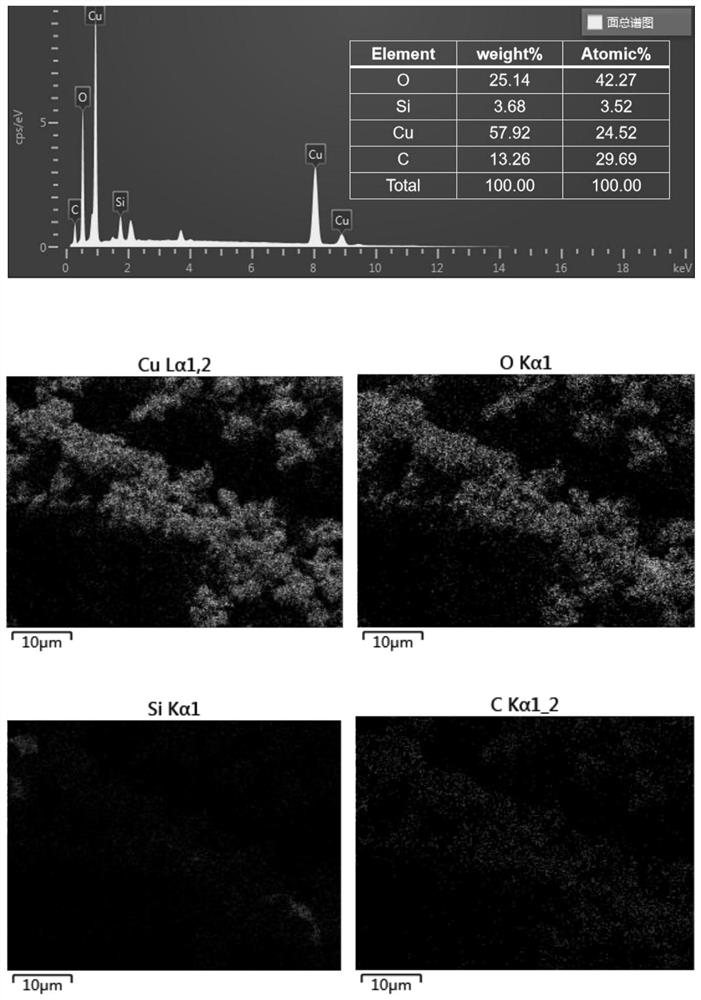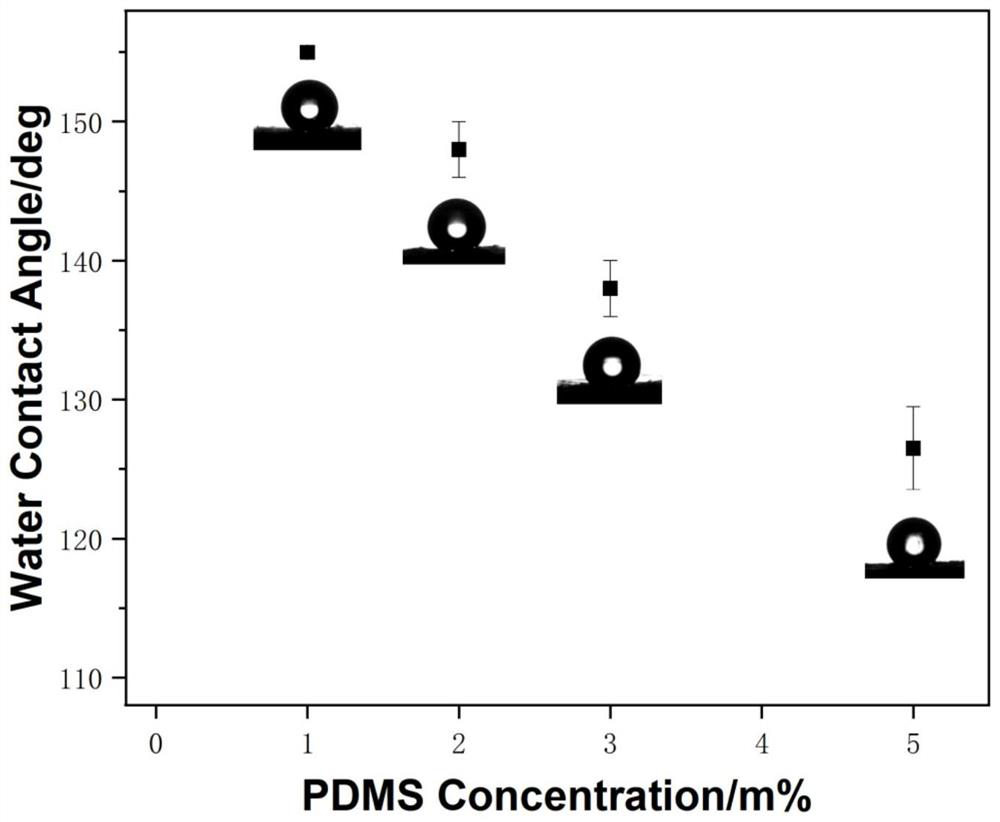Super-hydrophobic glass fiber composite oil-water separation material as well as preparation method and application thereof
A super-hydrophobic glass fiber, oil-water separation technology, applied in semi-permeable membrane separation, chemical instruments and methods, water/sludge/sewage treatment, etc. It can improve the hydrophobic and lipophilic performance, good demulsification effect and good separation effect.
- Summary
- Abstract
- Description
- Claims
- Application Information
AI Technical Summary
Problems solved by technology
Method used
Image
Examples
Embodiment 1
[0039] (1) Cut an appropriate amount of glass fiber mat, first use ethanol to ultrasonically clean the glass fiber mat for 10 minutes, then wash it with deionized water, and dry it in an oven at 60°C until it is completely dry;
[0040] (2) Dissolving 3g of basic copper carbonate in 250ml volume concentration of 30% ammonia solution, magnetically stirred for 30min until fully dissolved to obtain a basic copper carbonate-ammonia mixed solution;
[0041] (3) Immerse the glass fiber mat cleaned and dried in step (1) in a mixed solution of basic copper carbonate-ammonia water, put it into a reaction vessel, and conduct a hydrothermal deposition reaction at 100°C for 30 minutes to obtain CuO@glass fiber mat; take it out For CuO@glass fiber mat, wash and clean the glass fiber mat with deionized water, and dry it in an oven at 60°C until it is completely dry;
[0042] (4) Add 1 g of polydimethylsiloxane (PDMS) solution into 100 g of n-hexane solution, and stir magnetically for 30 min...
Embodiment 2
[0047] (1) Cut an appropriate amount of glass fiber felt, first use ethanol to ultrasonically clean the glass fiber composite material for 10 minutes, then wash it with deionized water, and dry it in an oven at 60°C until it is completely dry;
[0048] (2) 3g basic copper carbonate was dissolved in 250ml of 30% ammonia solution, and magnetically stirred for 30min until completely dissolved to obtain basic copper carbonate-ammonia mixed solution;
[0049] (3) Immerse the glass fiber mat cleaned and dried in step (1) in a mixed solution of basic copper carbonate-ammonia water, put it into a reaction vessel, and conduct a hydrothermal deposition reaction at 100°C for 30 minutes to obtain CuO@glass fiber mat; take it out For CuO@glass fiber mat, wash and clean the glass fiber mat with deionized water, and dry it in an oven at 60°C until it is completely dry;
[0050] (4) Add 2 g of polydimethylsiloxane (PDMS) solution into 100 g of organic solvent n-hexane solution, and stir magne...
Embodiment 3
[0054] (1) Cut an appropriate amount of glass fiber felt, first use ethanol to ultrasonically clean the glass fiber composite material for 10 minutes, then wash it with deionized water, and dry it in an oven at 60°C until it is completely dry;
[0055] (2) Dissolve 3g of basic copper carbonate in 250ml of 30% ammonia solution, magnetically stir for 30min until completely dissolved, basic copper carbonate-ammonia mixed solution;
[0056] (3) Immerse the glass fiber mat cleaned and dried in step (1) in a mixed solution of basic copper carbonate-ammonia water, put it into a reaction vessel, and conduct a hydrothermal deposition reaction at 100°C for 30 minutes to obtain CuO@glass fiber mat; take it out For CuO@glass fiber mat, wash and clean the glass fiber mat with deionized water, and dry it in an oven at 60°C until it is completely dry;
[0057] (4) Add 5 g of polydimethylsiloxane (PDMS) solution into 100 g of organic solvent n-hexane solution, and stir magnetically for 30 min...
PUM
| Property | Measurement | Unit |
|---|---|---|
| concentration | aaaaa | aaaaa |
| separation | aaaaa | aaaaa |
Abstract
Description
Claims
Application Information
 Login to View More
Login to View More - R&D
- Intellectual Property
- Life Sciences
- Materials
- Tech Scout
- Unparalleled Data Quality
- Higher Quality Content
- 60% Fewer Hallucinations
Browse by: Latest US Patents, China's latest patents, Technical Efficacy Thesaurus, Application Domain, Technology Topic, Popular Technical Reports.
© 2025 PatSnap. All rights reserved.Legal|Privacy policy|Modern Slavery Act Transparency Statement|Sitemap|About US| Contact US: help@patsnap.com



